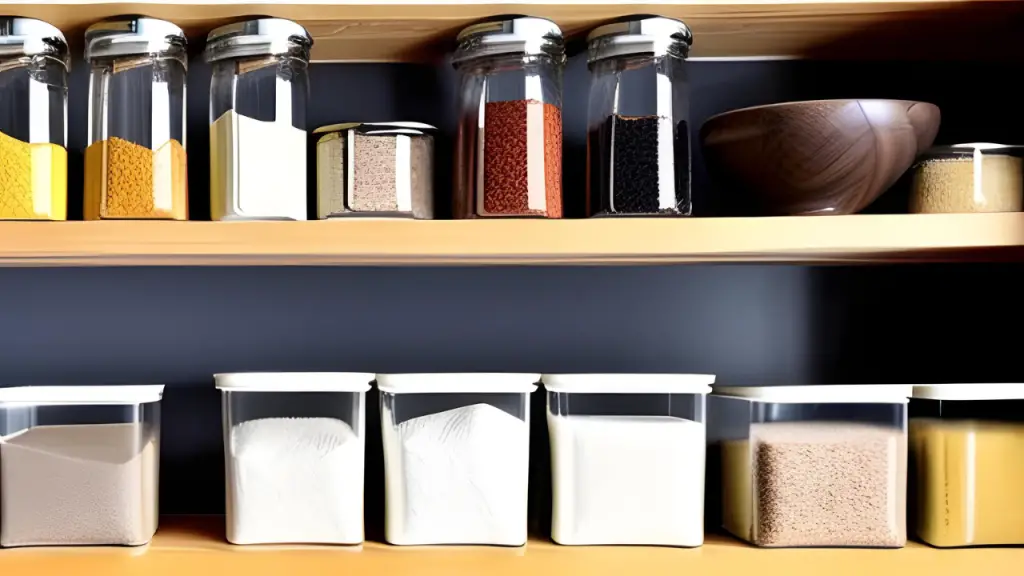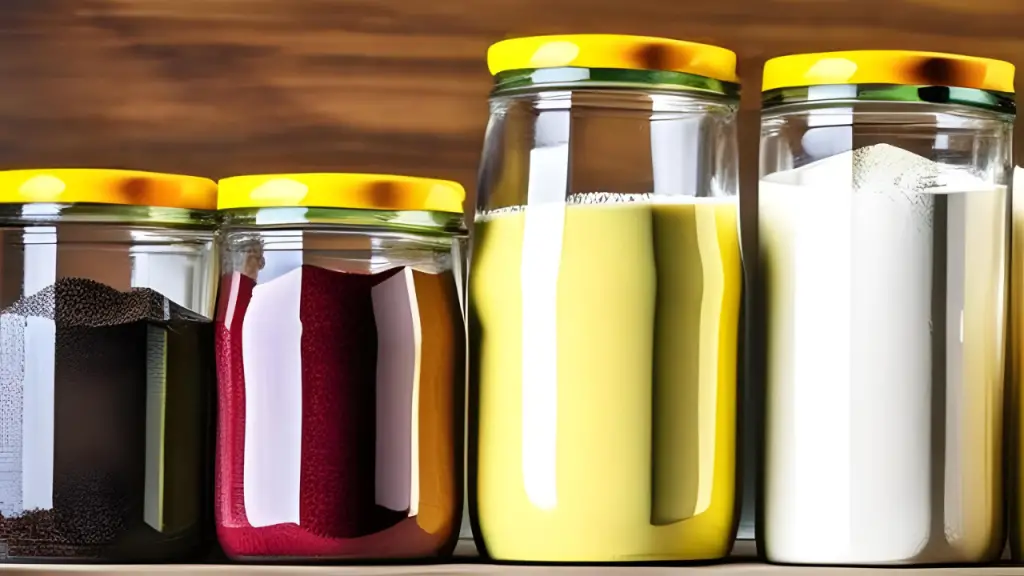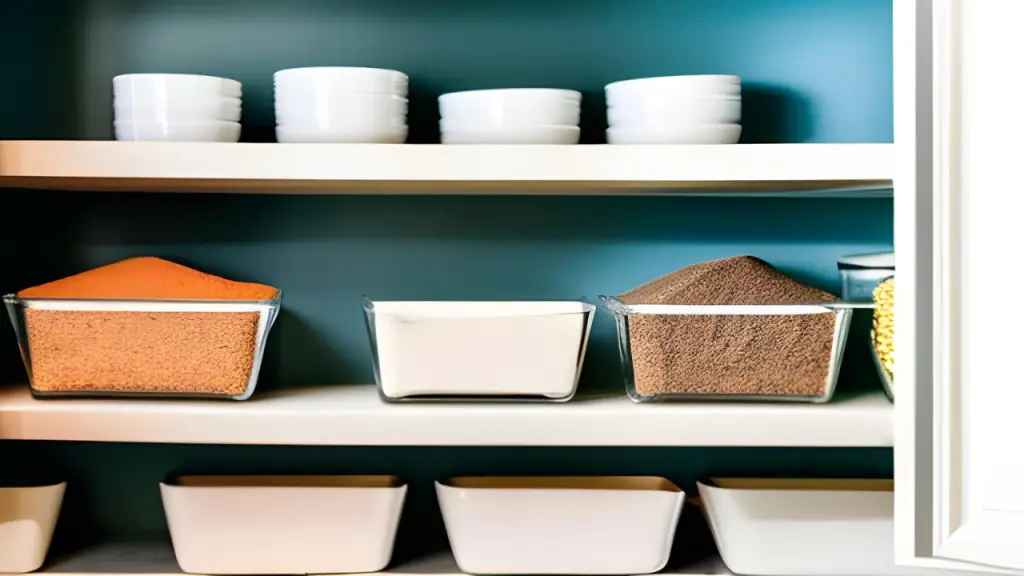Flour is a staple ingredient in countless recipes, ranging from baked goods to savory dishes. However, it’s essential to know how long flour lasts in the pantry to ensure its freshness and quality. In this comprehensive guide, we will explore the factors that affect the shelf life of flour and provide valuable insights into storage methods, signs of spoilage, and more. So, if you’ve ever wondered, “How long does flour last in the pantry?” you’ve come to the right place. Let’s dive in!
How Long Does Flour Last in the Pantry?
Flour, when stored properly, can have a relatively long shelf life. The exact duration depends on various factors, including the type of flour and the storage conditions. Here’s a breakdown of the average shelf life for different types of flour in the pantry:
All-Purpose Flour
All-purpose flour, a versatile option commonly used in many recipes, can generally last 6 to 8 months in the pantry. Proper storage practices, such as keeping it in an airtight container away from heat and moisture, can help extend its freshness.
Whole Wheat Flour
Whole wheat flour contains the entire grain, including the bran and germ, and has a shorter shelf life due to the higher oil content. It can last for about 4 to 6 months in the pantry. For optimal freshness, consider storing it in the refrigerator or freezer.
Self-Rising Flour
Self-rising flour, a convenient option with leavening agents like baking powder, has a shelf life similar to all-purpose flour. It can generally last for about 6 to 8 months in the pantry. Keep it sealed tightly to prevent moisture absorption.
Gluten-Free Flour
Gluten-free flour, made from alternative grains like rice, almond, or coconut, typically has a shorter shelf life than traditional wheat flour. Following the manufacturer’s instructions for storage and usage is recommended, as the shelf life can vary.
Factors Affecting the Shelf Life of Flour

Several factors can influence how long flour lasts in the pantry. It’s important to consider these variables to maintain the quality and taste of your flour:
Storage Conditions
Proper storage conditions are crucial for preserving the freshness of flour. Store it in a cool, dry place, away from direct sunlight, heat sources, and moisture. Airtight containers, such as glass jars or plastic bags, can help prevent moisture absorption and keep insects at bay.
Humidity
Humidity is one of the primary enemies of flour. High humidity levels can cause the flour to clump and become moldy. Therefore, it’s essential to choose a storage location with low humidity and ensure the container is tightly sealed.
Temperature
Flour is sensitive to temperature fluctuations. Exposure to high temperatures can accelerate the degradation process and lead to rancidity. Aim to store flour at a consistent temperature, ideally between 50°F and 70°F (10°C to 21°C), to maximize its shelf life.
Contamination
Flour is susceptible to insect contamination, particularly pantry pests like weevils and beetles. Inspect the flour for any signs of insects before storing it to prevent infestations. Before transferring it to the pantry, consider freezing newly purchased flour for 48 hours to kill any potential pests.
Signs of Spoiled Flour

To ensure the safety and quality of your recipes, it’s crucial to identify spoiled flour. Here are some signs that indicate flour has gone bad:
- Off Odor: Spoiled flour may emit a rancid or musty smell. If you detect any unusual odor, it’s best to discard the flour.
- Mold Growth: Flour exposed to moisture or improper storage conditions can develop mold. Inspect the flour for signs of green or black spots, web-like growths, or unusual discoloration.
- Pest Infestation: Insects, such as weevils or beetles, can find their way into improperly stored flour. If you notice any tiny moving creatures or their eggs in the flour, it indicates an infestation.
- Unusual Texture: Flour should have a smooth and powdery texture. If you notice clumps, hard lumps, or a gritty consistency, it’s a sign that the flour has absorbed moisture and is no longer suitable for use.
How to Store Flour So It Stays Fresh
Proper storage of flour is essential to ensure its freshness and prevent spoilage. Here are steps to store flour so it stays fresh:
Check the Freshness
Ensure the flour is not stale or infested before storing. If you notice any bugs or an off smell, discard the flour.
Choose the Right Container
Use airtight containers. Plastic, glass, or metal containers with tight-sealing lids are ideal. The container should be clean and dry before the flour is added.
Transfer and Seal
Pour flour into your chosen container. Press out as much air as possible before sealing it. This prevents moisture and other contaminants from getting in.
Label and Date
Always label your container with the type of flour and the date of purchase or the date you transferred it into the container. This helps you track the freshness and use older flour first.
Store in a Cool, Dry Place
Flour should be stored in a cool, dry area, away from direct sunlight and heat sources. Keep it away from strong odors, as flour can absorb them.
Refrigerate or Freeze for Long-Term Storage
You can store flour in the refrigerator or freezer if you have space. This is especially useful for whole-grain flours with a shorter shelf life due to their natural oils. Allow the flour to come to room temperature before using it in recipes, especially in baking, as cold flour can affect the outcome.
Rotate Stock
Practice the “First In, First Out” principle. Use older flour before opening new packages or containers.
Regularly Inspect
Occasionally, check your flour for any signs of moisture, mold, or insect activity.
Use Within Recommended Time Frames
All-purpose bread and pastry flour: 6-8 months at room temperature or up to a year in the freezer. Whole grain flours (like whole wheat or rye): 1-3 months at room temperature or 2-6 months in the freezer.
Keep Bugs Away
You can add a bay leaf or two to the container. Bay leaves are believed to repel pests but won’t affect the flavor of the flour.
By following these steps, you can ensure that your flour stays as fresh as possible, allowing you to enjoy it for cooking and baking to its fullest potential.
How to Know When It’s Time to Toss Your Flour

Knowing when to toss flour is crucial for the safety and taste of your baked goods. Here are signs and guidelines to help you determine if your flour has gone bad:
Check the Expiration Date
Packaged flour will have a ‘best by’ or ‘use by’ date. This date is a good guideline, though many flours (especially if unopened) can last beyond this date if stored properly.
Appearance
- Mold: Any signs of mold, which can look like fuzzy spots or discolorations, indicate that the flour should be discarded.
- Pests: Look for tiny bugs or their larvae, often called weevils or flour beetles. If you see any, it’s time to toss the flour.
Odor
Flour that’s gone bad will often have a rancid or sour smell. This is especially true for whole-grain flour containing oils that can turn bad. Any off or unusual odors indicate that the flour should not be used.
Texture
If the flour feels unusually clumpy or moist, it may have been exposed to water or high humidity. Moisture can lead to mold growth, so it’s best to err on the side of caution and discard the flour.
Taste (use caution)
If you’re uncertain after the previous checks, you can take a tiny pinch and taste it. Bad flour might taste sour or off. However, be cautious; tasting should be a last resort and only be done with a very small amount.
Storage Duration
- If your flour has been sitting open and unused for an extended period, it might be time to consider its quality. Flour’s shelf life can vary:
- All-purpose bread and pastry flour: 6-8 months at room temperature or up to a year in the freezer.
- Whole grain flours (like whole wheat or rye): 1-3 months at room temperature or 2-6 months in the freezer.
Changes in Performance
If you’ve baked with the flour and noticed that it doesn’t produce the desired results, this might indicate decreased quality. This is more of a nuanced sign, as many factors can affect baking outcomes.
Storage Conditions
If the flour has been exposed to unfavorable conditions, like high humidity, fluctuating temperatures, or strong odors, its quality might be compromised even if there are no obvious signs of spoilage.
Packaging Damage
The flour’s quality could be compromised if the original packaging is damaged, torn, or exposed. If you notice any of these signs or are in doubt about the flour’s quality, it’s best to discard it. Using fresh, good-quality flour ensures safety and results in better-tasting baked goods.
FAQ
How can I extend the shelf life of flour?
To extend the shelf life of flour, follow these tips:
- Store flour in an airtight container.
- Keep flour away from heat, light, and moisture.
- Consider storing whole wheat or gluten-free flour in the refrigerator or freezer.
Can I use flour after its expiration date?
While flour past its expiration date is not necessarily harmful, its quality and taste may have deteriorated. It’s best to use fresher flour for optimal results in your recipes.
Can I freeze flour to prolong its shelf life?
Yes, freezing flour can help prolong its shelf life. Ensure it is stored in an airtight container or sealed plastic bag to prevent moisture absorption.
What can I do with expired flour?
If you have expired flour and are unsure about its quality, it’s advisable to discard it. However, you can repurpose it for non-edible uses, such as play dough, or as an ingredient for arts and crafts projects.
Can I use flour with pantry pests?
If you discover pantry pests in your flour, it’s best to discard the entire batch. Using contaminated flour can lead to food contamination and potential health risks.
Is it safe to consume raw flour?
Consuming raw flour is not recommended, as it can carry harmful bacteria like E. coli. To ensure food safety, it’s crucial to heat flour adequately in recipes that require cooking or baking.
Conclusion
Knowing how long flour lasts in the pantry is essential for maintaining the quality and taste of your culinary creations. By considering the type of flour, storage conditions, and signs of spoilage, you can confidently use flour within its recommended shelf life. Remember to keep your flour in a cool, dry place, away from moisture and pests. With these guidelines in mind, you can make the most of your flour and enjoy delicious dishes every time.

